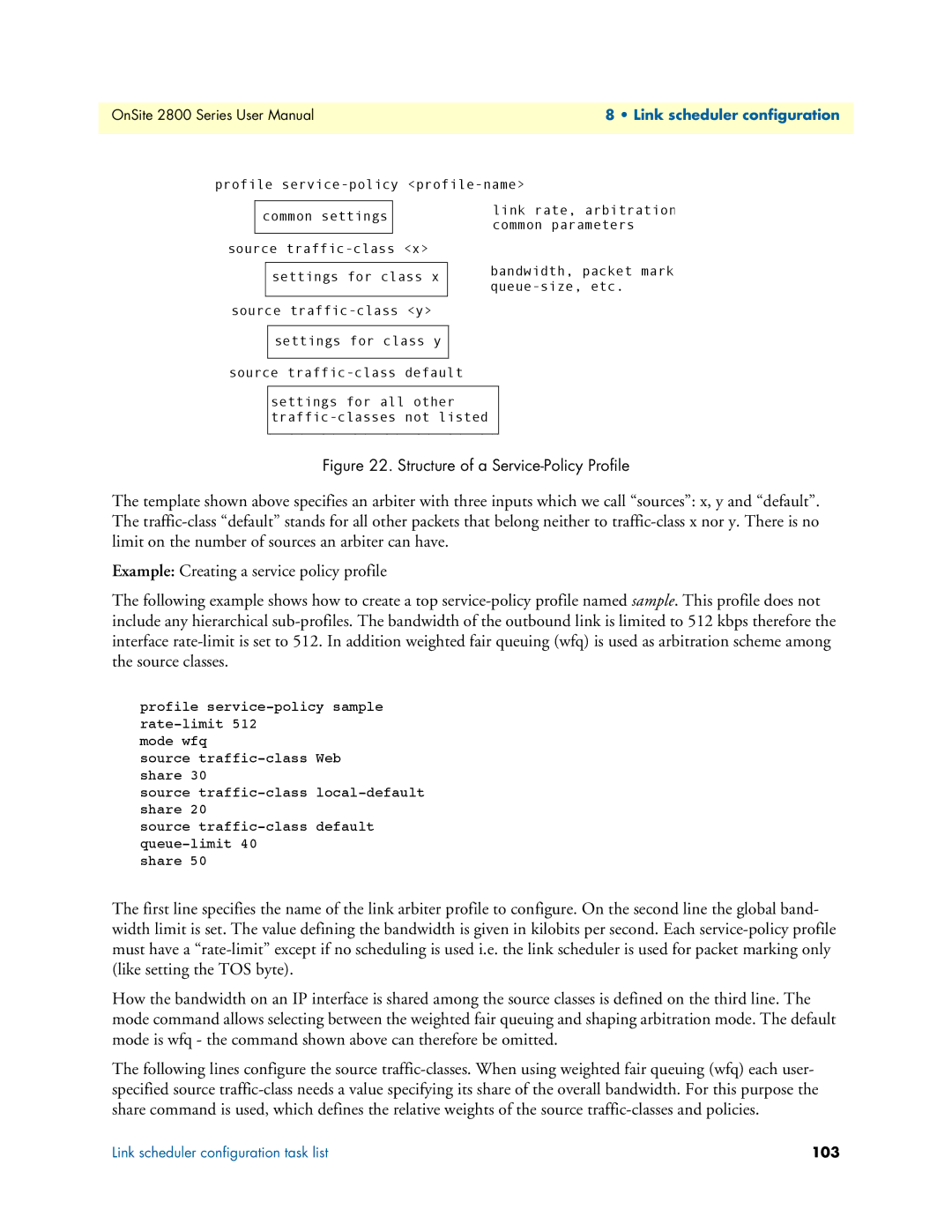
OnSite 2800 Series User Manual | 8 • Link scheduler configuration | ||||
|
|
|
|
| |
profile | |||||
|
|
|
|
| link rate, arbitration |
| common settings |
|
| ||
|
|
| common parameters | ||
|
|
|
|
| |
source |
| ||||
|
|
|
|
| bandwidth, packet mark |
|
| settings for class x |
| ||
|
|
| |||
|
|
|
|
| |
|
|
|
| ||
source |
| ||||
|
|
|
|
| |
|
| settings for class y |
|
| |
|
|
|
| ||
source |
| ||||
settings for all other
Figure 22. Structure of a Service-Policy Profile
The template shown above specifies an arbiter with three inputs which we call “sources”: x, y and “default”. The
Example: Creating a service policy profile
The following example shows how to create a top
profile
mode wfq
source
source
source
share 50
The first line specifies the name of the link arbiter profile to configure. On the second line the global band- width limit is set. The value defining the bandwidth is given in kilobits per second. Each
How the bandwidth on an IP interface is shared among the source classes is defined on the third line. The mode command allows selecting between the weighted fair queuing and shaping arbitration mode. The default mode is wfq - the command shown above can therefore be omitted.
The following lines configure the source
Link scheduler configuration task list | 103 |
